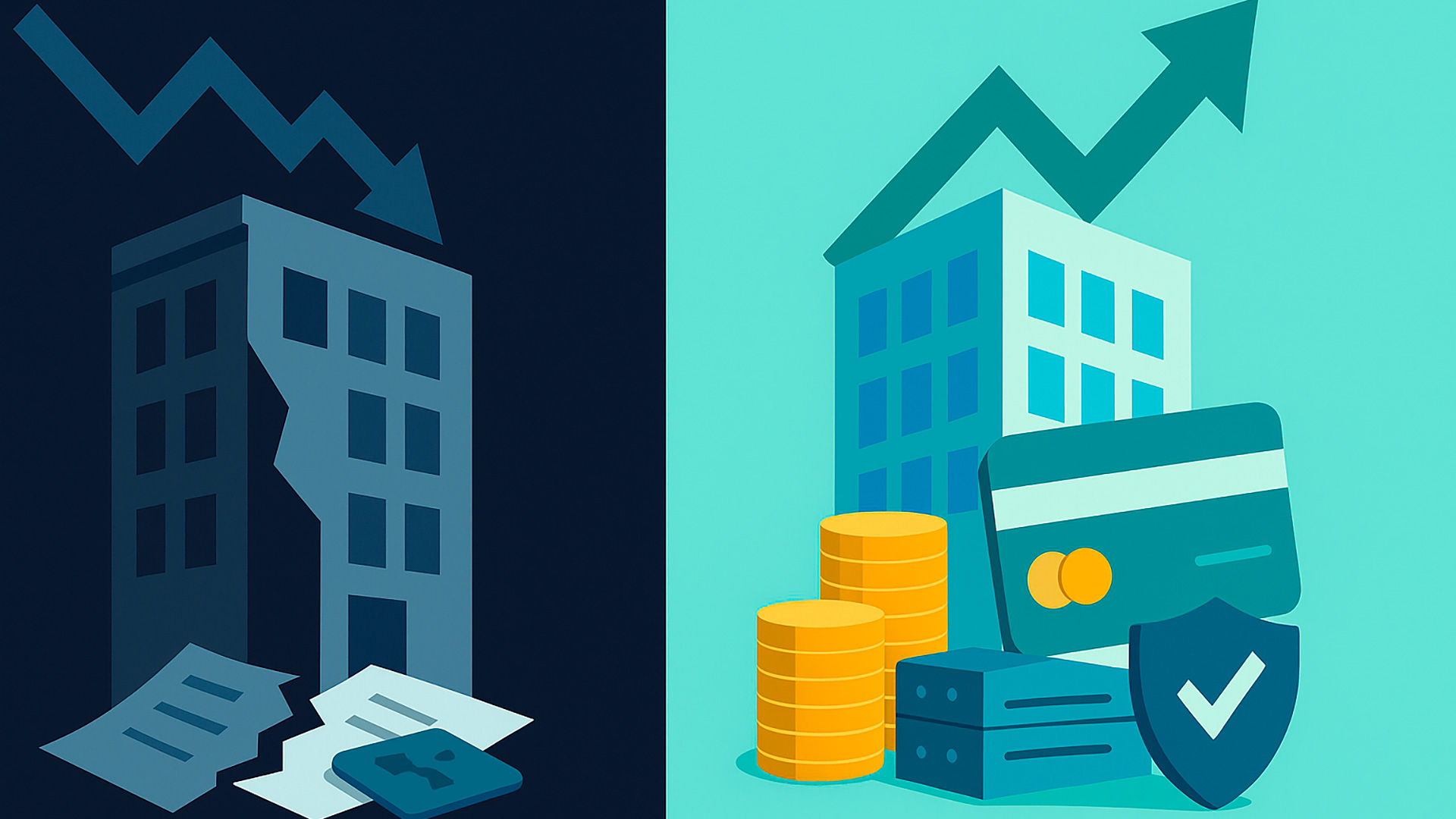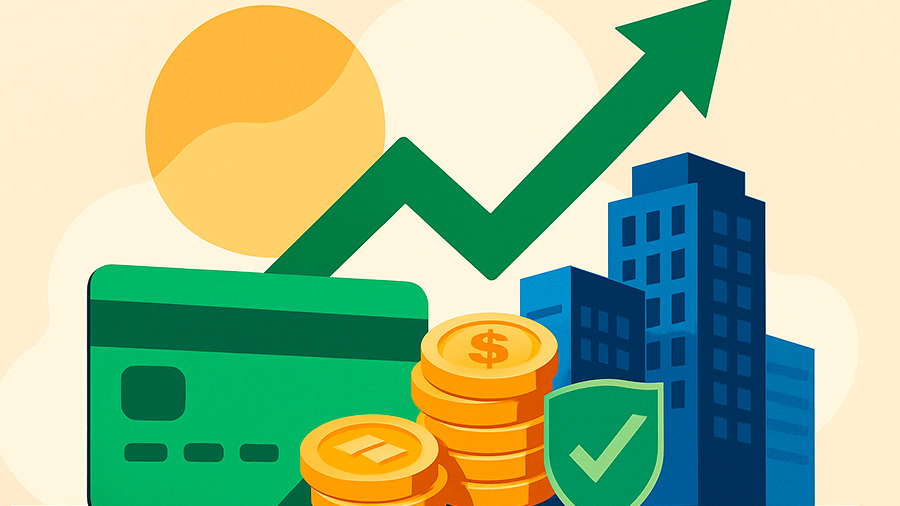
Bankruptcy often paints the picture of failure, loss, and the end of the line. For individuals and businesses alike, it marks a moment when financial obligations outweigh the ability to pay. Yet history is filled with cases where bankruptcy became less of an ending and more of a turning point. With the right strategy, careful planning, and renewed access to lending, many companies have not only survived bankruptcy but thrived afterward. Credit plays a central role in these stories. Without it, the bridge between financial ruin and renewed growth would be nearly impossible to cross. In this context, the concept of Affirm approval after bankruptcy serves as a practical example of how modern financial tools can support rebuilding, both for individuals and businesses navigating the aftermath of insolvency.
Bankruptcy: An Old Problem With Modern Implications
Throughout history, businesses have stumbled under the weight of debt. Economic downturns, mismanagement, or sudden crises often lead to insolvency. Bankruptcy laws exist to create a structured way forward, offering creditors some repayment while allowing companies or individuals to reset. In the corporate world, bankruptcy does not always mean liquidation. In many cases, it means restructuring—cutting debt, renegotiating contracts, and finding new sources of credit to support recovery. For global companies, it is a chance to reorganize operations, shed unprofitable divisions, and focus on sustainable growth.
The Role of Credit in Post-Bankruptcy Recovery
Emerging from bankruptcy leaves companies in a fragile state. Suppliers may be hesitant to continue partnerships, investors may doubt long-term stability, and customers may fear disruption. To address this, businesses need capital—and quickly. This is where credit comes in. Lines of credit, small loans, and innovative financial tools give companies the liquidity to pay employees, restart production, and reassure stakeholders. Even on the individual side, services that allow installment payments, like those tied to Affirm approval after bankruptcy, provide a lifeline for people working to rebuild their financial lives. Credit, when used wisely, becomes less a trap and more a tool for survival and resurgence.
Case Studies: Companies That Returned From Bankruptcy
Some of the most recognized global brands were once bankrupt. Their stories highlight how credit and smart management created pathways back to stability.
- General Motors: In 2009, GM filed for bankruptcy amid the global financial crisis. With government-backed loans and credit facilities, the automaker reorganized, eliminated underperforming brands, and came back stronger. Today, it remains one of the world’s leading automotive companies.
- Marvel Entertainment: In the mid-1990s, Marvel went bankrupt after a collapse in comic book sales. Through strategic loans and partnerships, it rebuilt, diversified into movies, and eventually became a global entertainment giant now owned by Disney.
- Delta Airlines: Facing rising fuel costs and heavy debt, Delta filed for bankruptcy in 2005. Access to credit during restructuring allowed it to modernize operations and merge with Northwest Airlines, securing a new future as one of the largest airlines in the world.
Each of these companies demonstrates that bankruptcy is not the end, but rather a step in a longer journey when paired with access to financing.
How Post-Bankruptcy Credit Works
After bankruptcy, lenders face higher risks when dealing with borrowers. To manage this, they often set stricter conditions. These may include higher interest rates, collateral requirements, or smaller credit lines. For businesses, loans may be conditional upon restructuring plans and financial transparency. For individuals, it may mean starting small—with secured cards, credit-builder loans, or platforms that grant installment-based approvals. The idea of Affirm approval after bankruptcy fits into this model. By assessing borrowers on more than just traditional credit scores, installment platforms create an alternative pathway to credit access, allowing those recovering from bankruptcy to prove reliability without overwhelming debt.
Table: Credit Options After Bankruptcy
| Type of Credit | Who It Serves | Key Benefits | Challenges |
|---|---|---|---|
| Secured Credit Cards | Individuals | Reports to credit bureaus; builds history | Requires cash deposit; low limit |
| Restructuring Loans | Businesses | Provides working capital during recovery | Higher interest rates; strict oversight |
| Installment Platforms (e.g., Affirm) | Individuals recovering from bankruptcy | Soft credit checks; flexible repayment | Limited to approved purchases; not always reported |
| Government-Backed Loans | Businesses | Lower rates; designed for recovery | Complex application process; political factors |
Behavioral Shifts That Make Credit Work
Credit alone cannot guarantee recovery. Success depends on how it is used. Companies emerging from bankruptcy often make major operational changes: reducing expenses, investing in profitable divisions, and avoiding over-leverage. Individuals make smaller but equally important changes: budgeting carefully, paying bills on time, and avoiding unnecessary borrowing. These habits matter because lenders watch closely. Responsible behavior is the fastest way to rebuild credibility and secure larger credit opportunities in the future.

Steps to Use Credit Responsibly After Bankruptcy
- Create a clear repayment plan before borrowing.
- Track spending with tools or budgeting apps.
- Start small with limited credit and expand only when stable.
- Review credit reports regularly to ensure accuracy.
When Credit Enables a True Comeback
Consider the example of small businesses that filed for bankruptcy during the COVID-19 pandemic. Many restaurants, retailers, and service companies faced closure due to lockdowns. However, access to credit—through emergency loans, restructuring packages, or platforms offering installment payments—allowed them to survive. Employees were rehired, suppliers were paid, and customers returned. The same principle applies to individuals: a fresh opportunity to access lending after bankruptcy can mean securing housing, transportation, or education that leads to long-term improvement. The concept of Affirm approval after bankruptcy shows how modern, alternative systems support these recoveries, even when traditional lenders remain cautious.
Challenges Facing Post-Bankruptcy Borrowers
Rebuilding after bankruptcy is not simple. Borrowers face limited access, higher costs, and persistent stigma. Some lenders may refuse to work with them for years, even if laws allow it. Others may only offer credit with predatory terms. Navigating these challenges requires awareness, patience, and careful selection of credit products. Borrowers must balance the need for immediate liquidity with the importance of sustainable growth.
Table: Mistakes to Avoid After Bankruptcy
| Mistake | Impact | Better Approach |
|---|---|---|
| Taking on large loans immediately | High default risk, worsens credit | Start with small, manageable credit |
| Ignoring repayment deadlines | Damages rebuilt credit history | Automate payments, set reminders |
| Falling for predatory lenders | High fees, long-term debt traps | Research reputable institutions |
| Over-relying on one product | Lack of diversity in credit profile | Mix credit tools gradually |
The Future of Post-Bankruptcy Lending
The financial landscape is shifting. Technology is allowing lenders to evaluate risk in new ways. Rather than relying only on credit scores, they look at income patterns, payment histories, and even digital behavior. This shift opens doors for borrowers recovering from bankruptcy. Companies with strong operations but damaged records can gain loans faster. Individuals can prove stability through consistent, small payments. Services that provide installment approvals, like Affirm approval after bankruptcy, highlight this trend. They show how alternative credit scoring and flexible repayment options are becoming part of mainstream finance, making recovery more accessible than ever.
Bankruptcy as a New Beginning
Bankruptcy feels like a collapse, but history and experience show it can be a turning point. With the right credit opportunities, businesses rebuild, individuals regain independence, and entire industries reshape themselves. The stories of Marvel, General Motors, and countless small businesses prove that access to credit is the difference between permanent failure and renewed success. For individuals, new lending models and platforms offering approvals even after bankruptcy provide a realistic chance to rebuild. Affirm approval after bankruptcy is more than a phrase—it is part of a broader truth: that recovery is possible when credit is used wisely, habits are improved, and opportunities are taken. Bankruptcy closes one chapter, but credit, innovation, and resilience ensure that another begins, often stronger than the last.
